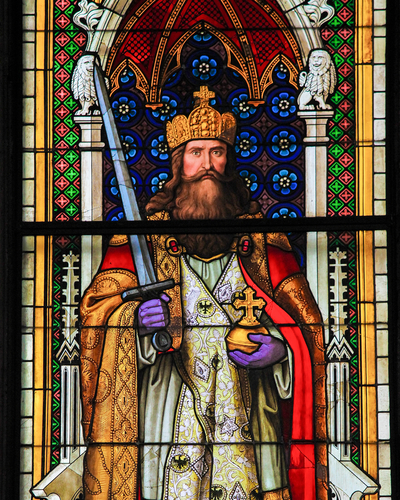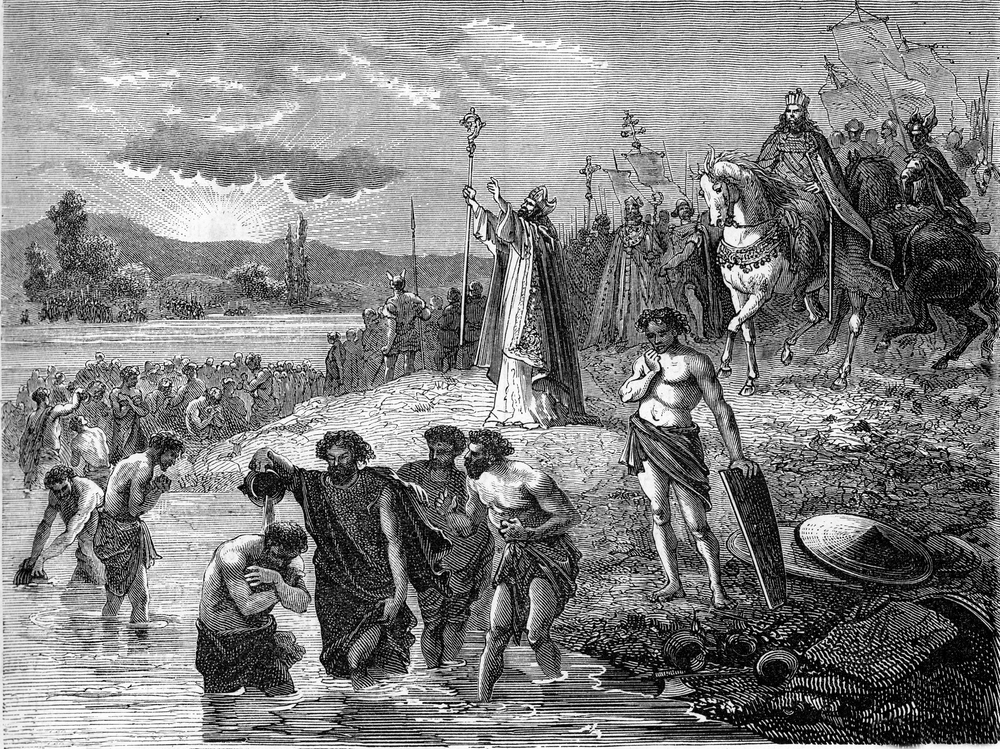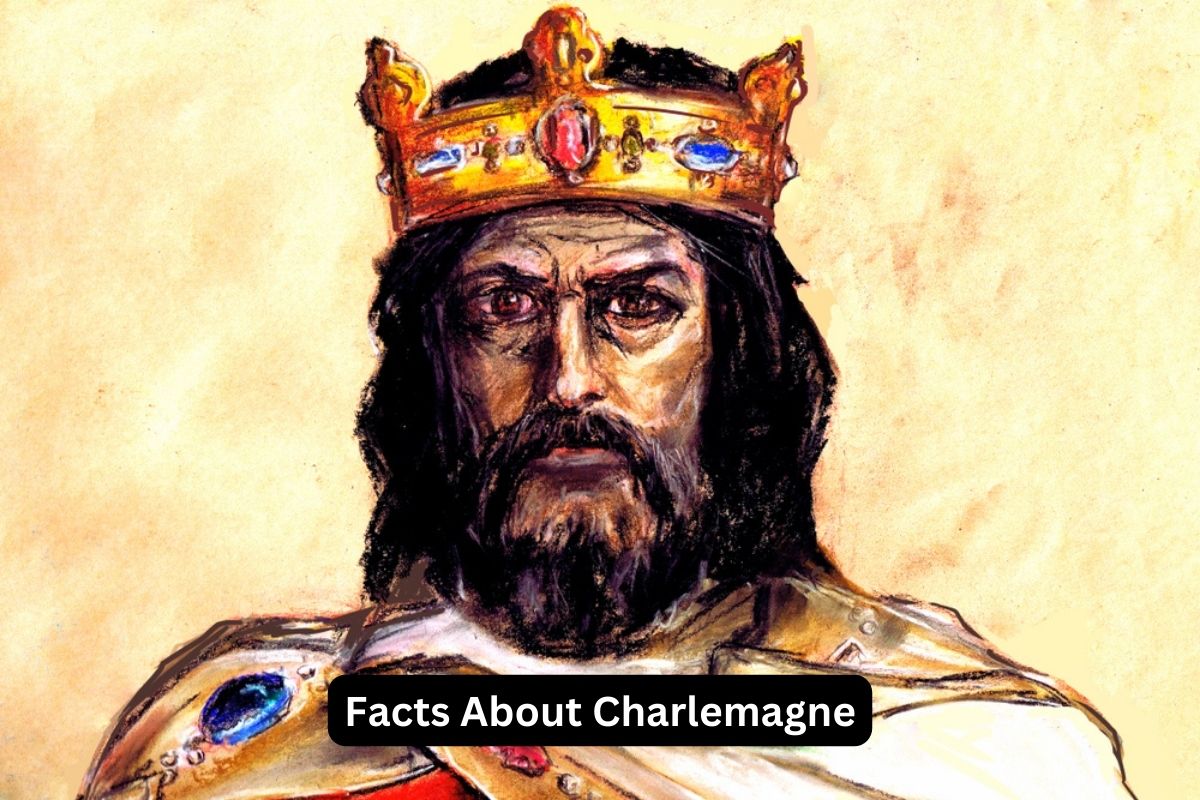Charlemagne, also known as Charles the Great, was a pivotal historical figure who lived from around 747 to 814 AD. As King of the Franks and Lombards, he wielded influence over significant portions of Western Europe.
His reign marked the revival of the Western Roman Empire and the establishment of the Carolingian Empire, a precursor to modern France and Germany.
Beyond his political achievements, Charlemagne’s legacy includes his efforts to promote education, the development of legal codes, and the spread of Christianity.
His coronation as Emperor in 800 AD and his contributions to culture and governance continue to resonate throughout the history of medieval Europe.
Charlemagne Facts
1. Lived around 747 to 814 AD
Charlemagne, born around 747 AD, was a prominent historical figure of the early medieval period. His exact birth date is uncertain, but he was part of the Carolingian dynasty, which ruled over a significant portion of Western Europe.
Also Read: Facts About the Holy Roman Empire
He passed away on January 28, 814 AD, leaving behind a legacy that profoundly impacted the course of European history.

2. King of the Franks and Lombards
Charlemagne inherited the Frankish throne from his father, Pepin the Short, in 768 AD. He ruled the Frankish Kingdom, which encompassed regions in present-day France and parts of Germany.
Charlemagne’s leadership extended to the Lombard Kingdom in Italy after he conquered it in 774 AD. This expanded his influence across a large part of Western Europe.
3. Crowned Emperor in 800 AD
One of the most significant moments in Charlemagne’s life was his coronation as Emperor of the Carolingian Empire on Christmas Day of the year 800 AD. Pope Leo III crowned him in Rome, reviving the title of Emperor in the West.
Also Read: Accomplishments of Charlemagne
This event marked a symbolic connection to the legacy of the Roman Empire and signaled Charlemagne’s authority over a wide-reaching territory, including parts of present-day France, Germany, Italy, and beyond.
The coronation emphasized Charlemagne’s political and religious stature and solidified his position as a central figure in the medieval world.
4. Promoted education and culture
Charlemagne was a strong proponent of education and cultural advancement within his empire. He recognized the importance of learning and wanted to revive the knowledge and values of the Roman Empire.
He established schools, often located in monasteries, where scholars taught subjects like grammar, rhetoric, logic, arithmetic, and music. This effort laid the foundation for the Carolingian Renaissance, a period of renewed intellectual and artistic activity.
5. Created legal codes called capitularies
Charlemagne was concerned with maintaining order and uniformity within his diverse empire. To achieve this, he issued a series of legislative acts known as capitularies.
These were collections of laws and regulations that covered a wide range of topics, from religious matters and social conduct to economic policies and administrative procedures. The capitularies aimed to standardize laws and governance across the empire.

6. Spread Christianity across his empire
harlemagne was a devout Christian and saw himself as a protector of the Church. He actively promoted the Christian faith and worked to convert pagan tribes under his rule.
His campaigns against non-Christian groups, such as the Saxons, were often accompanied by efforts to establish churches and Christian institutions.
His support for the Church strengthened the ties between religious and political authorities, and his cooperation with the papacy enhanced his reputation as a defender of Christendom. His efforts contributed to the Christianization of significant parts of Europe.
7. Had a palace in Aachen
Charlemagne established Aachen (also known as Aix-la-Chapelle) as his primary residence and the center of his court. He chose this location for its strategic position at the crossroads of important trade routes and for its access to natural hot springs.
In Aachen, he constructed a grand palace complex that included a chapel, known as the Palatine Chapel. This chapel would later become a significant architectural and cultural landmark.
The palace at Aachen became a hub of political, cultural, and religious activity during Charlemagne’s reign.
8. Led military campaigns to expand his empire
Charlemagne’s rule was marked by his ambitious military campaigns. He sought to expand his empire’s borders through conquests and military diplomacy.
He waged numerous campaigns against neighboring peoples, including the Lombards in Italy, the Saxons in the north, and the Moors in Spain. These campaigns aimed to strengthen his rule and extend the reach of the Carolingian Empire.
9. Contributed to the feudal system’s development
Charlemagne’s reign played a role in the evolution of the feudal system, a hierarchical social and economic structure that defined relationships between various classes in medieval society.
In exchange for protection and resources, nobles pledged loyalty and military service to the king or emperor. This system helped maintain order and stability, and it influenced the organization of power and landownership throughout medieval Europe.
10. His legacy influenced medieval Europe’s shaping
Charlemagne’s legacy had a lasting impact on the development of medieval Europe. His efforts to promote education, religion, and centralized governance laid the groundwork for later cultural and political developments.
His imperial title and connection to the Roman Empire’s heritage influenced the concept of a unified European realm.
Additionally, his emphasis on learning and cultural revival contributed to the preservation and transmission of classical knowledge. Despite challenges that emerged after his death, Charlemagne’s influence continued to shape the course of European history for centuries to come.
